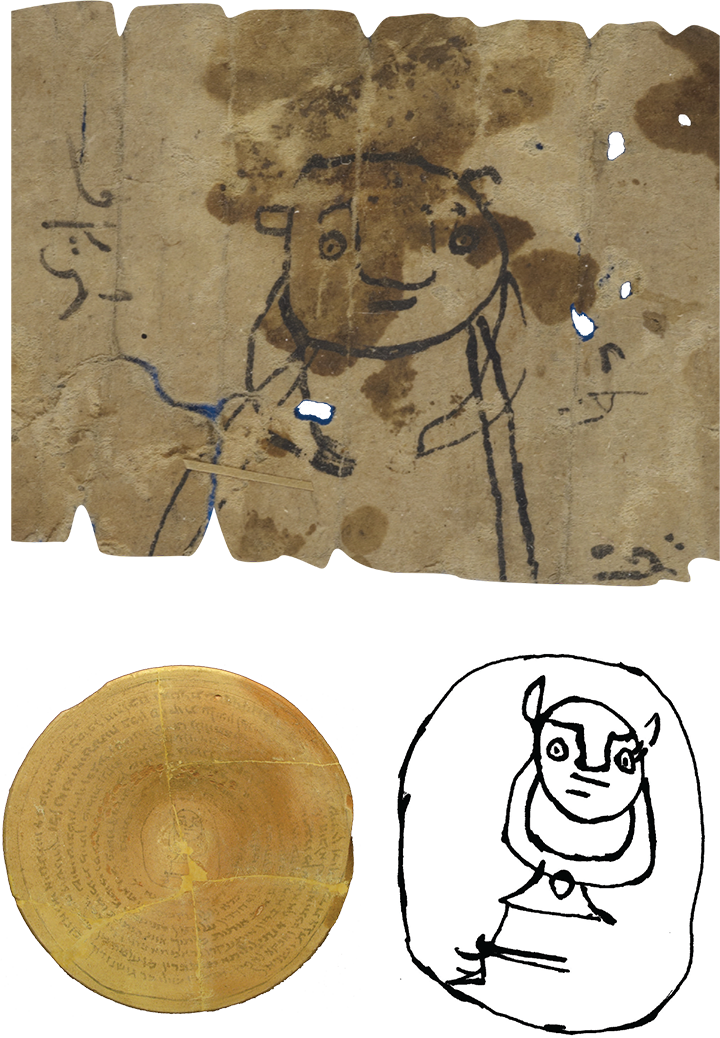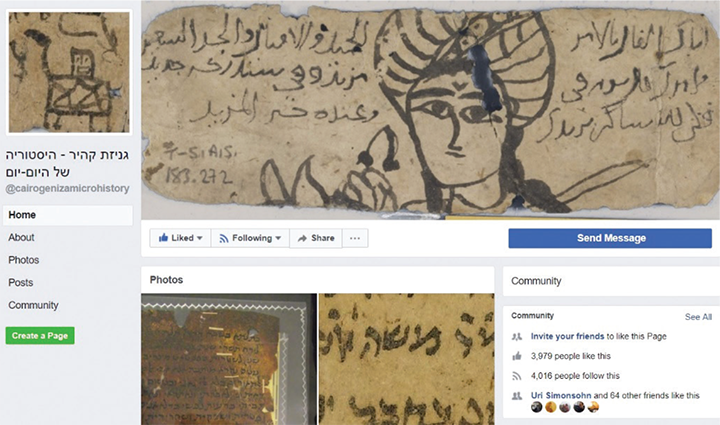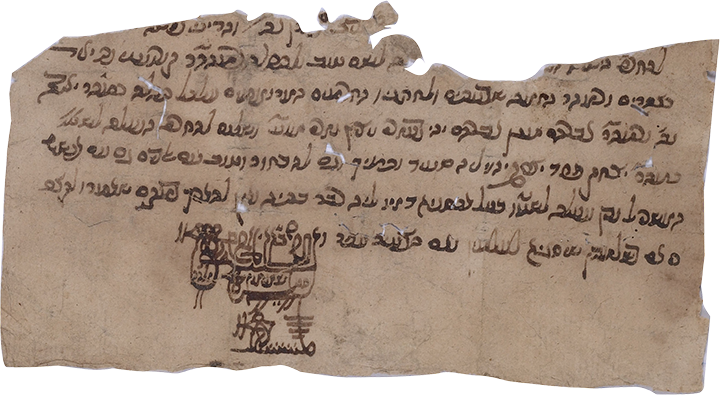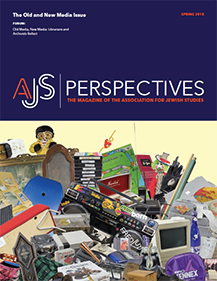What does a millennium-old odiferous storage room for discarded texts have in common with the digital age? Quite a lot in fact! The past decade has witnessed a veritable revolution in the study of the Cairo Geniza, a treasure trove of Jewish documents spanning the millennium from the ninth to nineteenth centuries CE. A primary engine of this transformation has been the development of several cutting-edge digital tools, foremost among them the Friedberg Geniza Project (FGP). These tools have not merely facilitated research. They have changed the way research is conducted. To give but one example, a generation ago scholars often transcribed a document from a microfilm image and then pursued its study from their transcription. Today, with FGP having made almost half a million high-quality digital images of Geniza documents available online, scholars constantly consult the image of the document, which is often more accessible than its published version. This availability of images is a key factor in the growing interest in the material and visual aspects of the Geniza fragments, the physical layout of text on the page, and the juxtaposition of different texts on the same Geniza fragment.
Alongside the flourishing of the field in the more traditional manifestations (publications, conferences, awards, etc.), a lively Geniza scene has developed on Facebook. This scene is cultivated by a new generation of young scholars who tend to spend an unfortunate amount of time on social media. If both social media and the Geniza are part of our lives, why not bring the two together?
“Doing” Geniza on Facebook for us is both a tool of work and a form of outreach. When studying Geniza fragments we often encounter things we do not understand. While we could consult venerable tomes in the library, or bombard our teachers and colleagues with inquiring emails, a quick question on Facebook usually provides a more rapid result. On other occasions, we have come across a fragment that is not relevant to of someone pertinent. Often the result is an unexpected discovery.

For example, Oded Zinger came across a fragment with a rather cute Shrek-like image. Following a post on Facebook, a fellow scholar was quick to point out a remarkably similar image of a demon appearing in a Babylonian incantation bowl—allowing for a better understanding of both images and for a link between these two genres (fig. 1). In another case, Zinger uploaded an image of what he thought was a 1645 legal document made in Gibraltar. Through a common Facebook friend, Professor Joseph Chetrit from the University of Haifa saw the image and corrected the reading of the date to 1825. The document involves the writer and poet Solomon b. Samuel Tov Elem of Tétouan, whom Chetrit has been studying for years. Thus, he gained access to a document he did not know about, and Geniza scholars have one less document to identify (one down, 300,000 to go!). As long as one is not too proud to publicly admit mistakes and lacunae in one’s knowledge there is a great joy in learning about things beyond one’s narrow specialization and connecting with scholars generous with their knowledge and expertise.

Facebook also allows us to take the Geniza out of the academic arena and introduce it to broader audiences. With such an outreach goal in mind, Moshe Yagur created the popular page the Cairo Geniza —A History of Everyday Life (גניזת קהיר – היסטוריה של היום-יום). This page features a wide assortment of Geniza documents with translations and short explanations (fig. 2). The posts range from an eleventh-century "Yiddishe Mame" from northern Syria writing to her son in Egypt ("I'm sick of writing to you without getting response.… Don’t you know that my heart desires news from you? Don’t kill me before my time!"), to a young man describing a pirate attack on his ship ("They threw fire on the ships… I cannot describe what happened… I threw the fire out to the sea!").

Part of the special appeal of writing on the Geniza on Facebook is the ability to approach the material in a humorous key, inappropriate in the more traditional academic media. After all, in what peerreviewed article will you be able to muse on the cow-shaped signature of Hayim b. Ya‘akov Simhon? (fig. 4). This humorous approach also allows us to relate to current events through a perspective provided by the distant past, thereby casting light on both the old and the new. Such was the case, for example, when on the occasion of the Jerusalem Gay Pride Parade, Yagur uploaded a Geniza letter describing the scandal that erupted in eleventh-century Ramla when two men publicly expressed their desire to one another in the synagogue, in the middle of the Yom Kippur prayers. The writer reports the uproar in the congregation, the involvement of the police, but concludes, “this is how people act on a daily basis.”
Indeed, the new social media is attractive for bringing together these goals of outreach and research. Relatives, colleagues, forgotten friends, and strangers intermingle in the comments sections of our posts. Occasionally we need to interject and explain that this commentator knows what she or he is writing about, or that the dismissive comment was actually made jokingly by an old friend. But these misunderstandings are well worth the gems that such interactions provide. For example, Yagur once uploaded an image of a legal query to a Muslim mufti in Arabic characters about a Jewish woman whose husband converted to Islam and traveled to India. The post received many comments. Some found parallels between the woman’s plight and that of Jewish women seeking divorce in rabbinical courts in modernday Israel. But the most interesting comment came from an Egyptian scholar, Gahlan Ismail, an expert on the modern history of Egyptian Jews, who offered a better reading and translation of several parts of the document. And so, through a post in the social media on an ancient text, we have been able to connect with a scholar living in the city where the document originated, despite modern political and cultural borders.

Thank you to Dotan Arad for helping with the image.
Yagur’s posts feature in the blog of the National Library of Israel. You are welcome to like the original page here, or friend us on Facebook. For another interesting Geniza Digital Humanities project see here.

